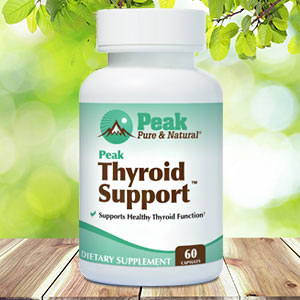Get Easy Health Digest™ in your inbox and don’t miss a thing when you subscribe today. Plus, get the free bonus report, Mother Nature’s Tips, Tricks and Remedies for Cholesterol, Blood Pressure & Blood Sugar as my way of saying welcome to the community!
Considering hormone replacement therapy? Check your ‘vascular age’

If you’re a woman in menopause seeking relief of symptoms like hot flashes and night sweats, hormone therapy can seem like a catch-22. Take it, and you get blessed relief from your symptoms — but you also raise your risk of stroke, blood clots and heart attack.
At midlife, your cardiovascular risk is already elevated because of the aging process and an increase in risk factors like high blood pressure and weight gain. So, it seems like the last thing you would want to do is add to that risk by taking hormone therapy.
However, researchers are finding that there may be another, more accurate way to measure postmenopausal cardiovascular risk that has nothing to do with a woman’s chronological age or years since menopause. And this new measure may help determine how truly risky hormone therapy is for a menopausal woman’s cardiovascular health…
Vascular age better determines cardiovascular risk
According to a recent study, measuring a woman’s “vascular age” is a better indicator of cardiovascular disease risk than how old she is or how long she’s been in menopause.
Merely using age and number of years since menopause onset to determine hormone therapy risk leaves out several crucial variables. For instance, the cardiovascular risk is much higher for a 52-year-old overweight smoker with high cholesterol than for a 65-year-old nonsmoker with normal weight and cholesterol, whose lifestyle may have helped keep her arteries much younger.
The study used data from the Women’s Health Initiative, a long-term research project focused on strategies for preventing heart disease and other conditions in postmenopausal women. The hormone therapy trial involved 27,347 postmenopausal women between the ages of 50 and 79 and analyzed their health for almost 18 years, which gave them information about which women ended up with cardiovascular disease.
The researchers used two different cardiovascular risk scoring systems to examine the data: the Framingham Risk Score and a separate system from the American Heart Association and American College of Cardiology (AHA/ACC). Both scoring systems measured vital signs like age, race, total cholesterol, systolic blood pressure, use of blood pressure medication, diabetes and smoking status. The one main difference is that the Framingham score substitutes body mass index (BMI) for HDL (or “good”) cholesterol in their calculations.
Study results showed both cardiovascular risk scoring systems predicted cardiovascular disease more accurately than chronological age and years since menopause. Thus, it showed measuring a woman’s cardiovascular disease risk, or vascular age, is a much better tool for making decisions about hormone therapy.
“This is a landmark study because it is contrary to what the prevailing argument has always been,” says lead author Dr. Robert Wild, a physician-scientist at the University of Oklahoma College of Medicine. “It’s important for our management of patients because it allows us to begin to quantify risk and refine it above and beyond a simple age estimate.”
Wild notes that while age certainly plays a role in cardiovascular risk, it is modified by other factors. “We have to make individualized decisions instead of using a broad brush stroke,” he says.
A new way to judge hormone therapy risk
Up until now, decisions about hormone therapy have been split depending on the medical field. Cardiologists, for instance, tend to be against hormone therapy, while gynecologists and primary care physicians are more likely to prescribe it for menopausal symptoms. This study provides a middle ground between these polarized camps as well as a more precise method of predicting cardiovascular risk.
Given how easy the scoring systems are to use and their integration into electronic health records, Wild says he hopes the “vascular age” approach quickly becomes part of clinical practice. He is developing an educational clinic aimed at physicians going into primary care and obstetrics and gynecology to give them more in-depth experience with menopause management.
Women with menopause can also use this research to empower them in the hormone therapy decision-making process. If you are a menopausal or postmenopausal woman seeking symptom relief, you may want to ask your doctor to determine your vascular age before making a final decision on whether hormone therapy is right for you.
If it turns out your cardiovascular risk is too high for hormone therapy, there are natural, non-hormonal options for consideration, including:
- 500 mg of magnesium daily
- 10,000 IUs of vitamin A twice a week
- 800 IUs of vitamin E twice a week
- 10,000 IUs of vitamin D3 twice a week
- Omega-3 fatty acids
- Soy isoflavones
Editor’s note: There are perfectly safe and natural ways to decrease your risk of blood clots including the 25-cent vitamin, the nutrient that acts as a natural blood thinner and the powerful herb that helps clear plaque. To discover these and other secrets of long-lived hearts, click here for Hushed Up Natural Heart Cures and Common Misconceptions of Popular Heart Treatments!
Source:
Hormone Therapy for Menopause Symptoms — Cleveland Clinic













